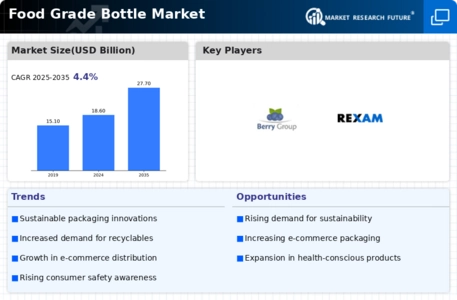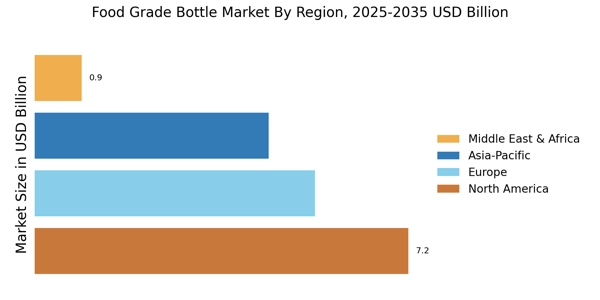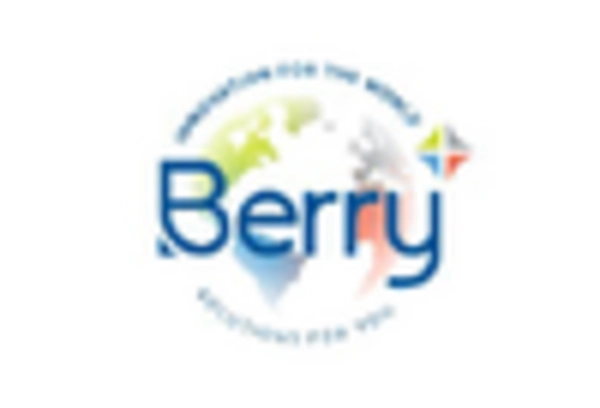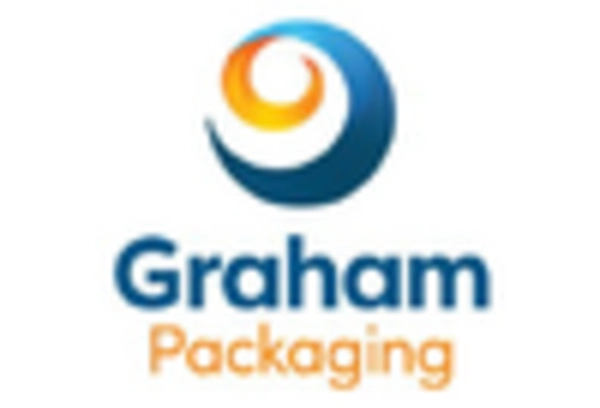Customization Trends
Customization trends are emerging as a key driver in the Food Grade Bottle Market. Consumers are increasingly looking for personalized products that reflect their individual preferences and lifestyles. This demand for customization is prompting manufacturers to offer a variety of sizes, shapes, and designs for food grade bottles. Recent Industry expert's suggest that brands that provide customizable options are likely to attract a more diverse customer base. Furthermore, the ability to personalize packaging can enhance brand loyalty and consumer engagement. As a result, companies that embrace customization in their food grade bottle offerings may find themselves better positioned to meet the evolving expectations of consumers, ultimately driving sales and market growth.
Sustainability Initiatives
The Food Grade Bottle Market is increasingly influenced by sustainability initiatives. Consumers are becoming more environmentally conscious, leading to a demand for eco-friendly packaging solutions. This shift is prompting manufacturers to adopt biodegradable and recyclable materials in their production processes. According to recent data, the market for sustainable packaging is projected to grow significantly, with a compound annual growth rate of over 10% in the coming years. This trend not only aligns with consumer preferences but also encourages companies to innovate in their product offerings. As a result, businesses that prioritize sustainability in their food grade bottles are likely to gain a competitive edge, appealing to a broader customer base that values environmental responsibility.
Technological Advancements
Technological advancements are significantly impacting the Food Grade Bottle Market. Innovations in manufacturing processes, such as injection molding and blow molding, are enhancing production efficiency and reducing costs. Additionally, the integration of smart technologies, such as QR codes and RFID tags, is enabling better tracking and traceability of food products. This trend is particularly relevant as consumers increasingly seek transparency regarding the origins and safety of their food. Market data suggests that the adoption of advanced technologies in packaging is expected to grow, with a projected increase in market share for smart packaging solutions. As a result, companies that leverage these technological advancements may improve their operational efficiency and meet evolving consumer demands.
Health and Safety Regulations
Health and safety regulations play a crucial role in shaping the Food Grade Bottle Market. Stringent guidelines regarding food safety and packaging materials are enforced by various regulatory bodies. These regulations ensure that food grade bottles are manufactured from materials that do not leach harmful substances into food products. Compliance with these standards is essential for manufacturers to maintain market access and consumer trust. Recent statistics indicate that the demand for compliant food packaging solutions is on the rise, with a notable increase in investments towards quality assurance processes. Consequently, companies that prioritize adherence to health and safety regulations are likely to enhance their market position and foster consumer loyalty.
Rising Demand for Convenience
The rising demand for convenience is a significant driver in the Food Grade Bottle Market. As lifestyles become busier, consumers are increasingly seeking ready-to-eat and on-the-go food options. This trend is leading to a surge in demand for food grade bottles that are lightweight, portable, and easy to use. Market analysis indicates that the convenience food sector is experiencing robust growth, with a substantial portion of consumers preferring products that offer quick and hassle-free consumption. Consequently, manufacturers are focusing on designing food grade bottles that cater to this need, incorporating features such as resealable caps and ergonomic designs. This shift towards convenience is likely to continue influencing product development and marketing strategies in the industry.


















Leave a Comment